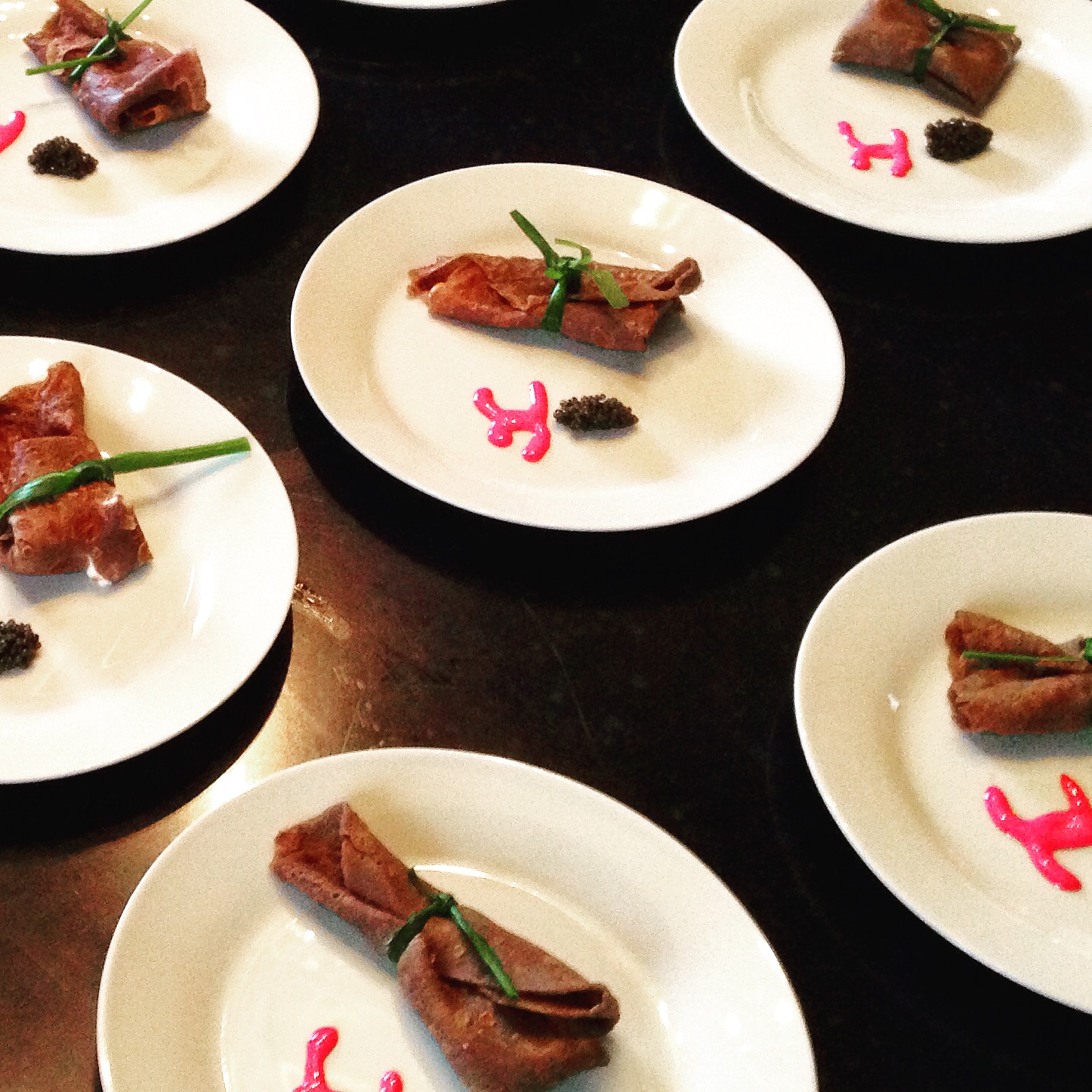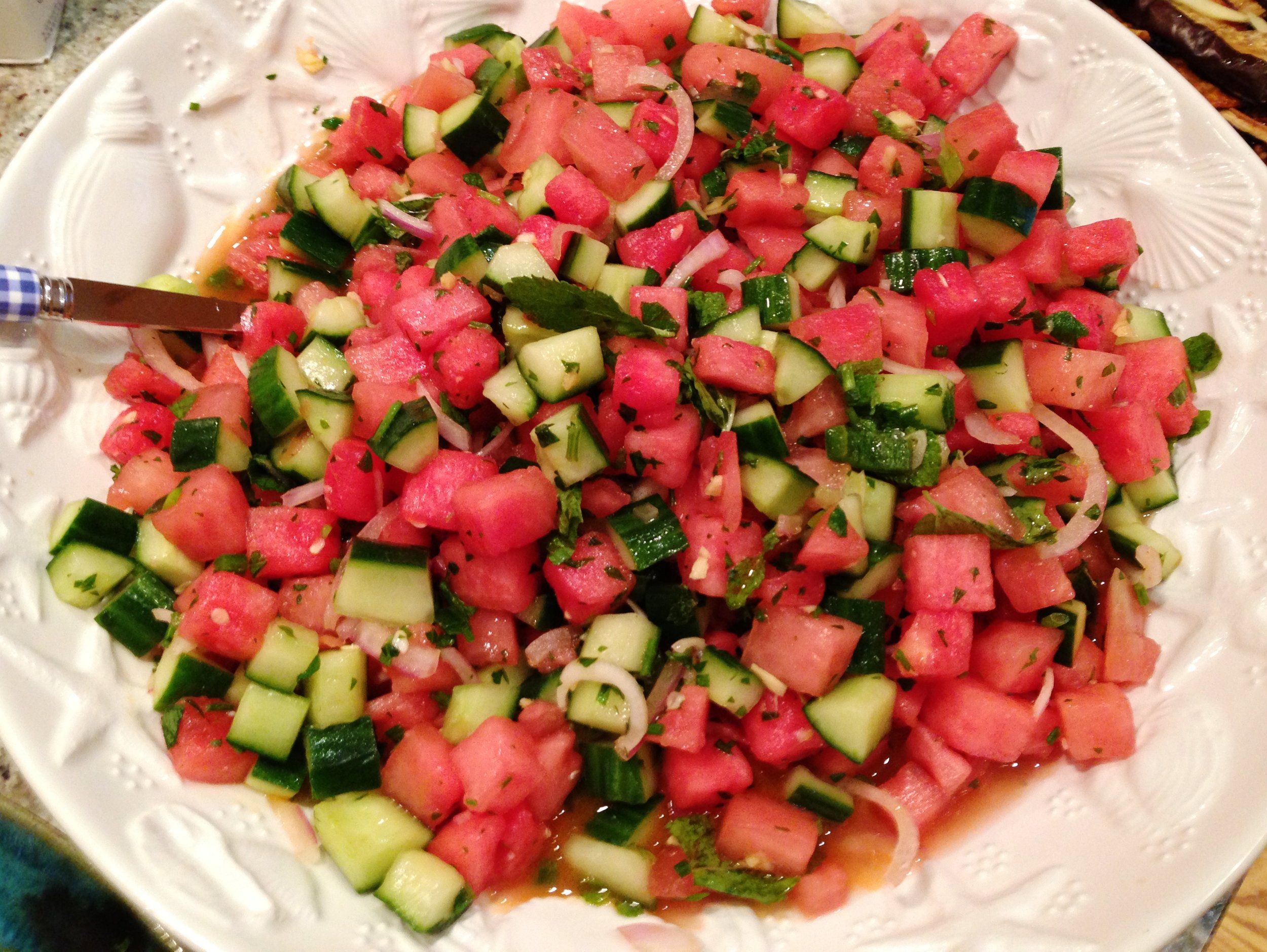Jerusalem is in the heart of one of the world's most ancient crossroads of cultures, religions, history...time itself, really. Walking through the city's Machane Yehuda market, one feels a part of the timeless bustle.
Referred to as a shuk ("shook") in Hebrew, this marketplace was originally open-air, and is now partially covered. This neighborhood outside of the old city walls was established in 1887, founded by three business partners (including one German Protestant), named after the brother of one of the owners (Yehuda). A market was established at the end of the 19th century to serve the growing areas outside the Old City, where Arab vendors sold their goods. But under Ottoman rule, the market expanded rapidly and without real order, and sanitation conditions grew unsustainabe until the late 1920's, when British mandate authorities cleared everyone out and installed a permanent market structure known by its present-day name, the Mechane Yehuda Market.
As is common around historic market squares in cities the world over, the major streets on the perimeters of the market are bisected by smaller side streets that were once all named for items sold in the market -- in this case, fruits and nuts: Afarsek (peach) Street, Agas (pear) Street, Egoz (walnut) Street, Shaked (almond), Shezif (plum), Tapuach (apple), and Tut (berry) Streets.
In 1931, a new section of the market was built by 20 traders who previously only had temporary wooden stalls in this area to the west of the main market. This arm of the market was dubbed the Iraqi Market, for its traders were largely Iraqi Jews. Today the Iraqi Market is located right off of Mechane Yehuda Street, and offers lots of exotic middle eastern spices, fruits, herbs, and various specialty items.
The Machane Yehuda market boasts more than 250 vendors of all varieties. Some sell fresh fruits and vegetables as in a greenmarket; others sell baked goods and breads; cured meats and cheeses; nuts, seeds, pastas, spices and spice blends; meat and fish; wines and liquors; and some sell non-edibles like clothing and shoes, textiles and tapestries, housewares, and Judaica. (No market in Israel is complete without some kind of Judaica shop contained within its walls!). You'll be overwhelmed by the gorgeous displays of fresh fruit and veggies, which clearly place you smack in the middle of the Middle East and Mediterranean! Pomegranates (thought to be the original "apple" in the Garden of Eden) abound, and figs and dates and eggplant and tomatoes and olives are everywhere.
Another classic in large markets? Plenty of stands and shops selling prepared foods to eat on the spot, or while walking the market lanes. There are a multitude of falafel, shawarma, kebab, shashlik, mixed grill, baklava, and halva stands, along with juice bars and fruit sellers with fruit cups and various preparations ready for easy consumption.
All of this is within the classic market atmosphere of vendors yelling out prices to entice shoppers, and those exhibiting their goods to passersby. On Thurdays and particularly Friday afternoons, the market is packed with shoppers stocking up for shabbat, the sabbath, since the devout must prepare meals ahead of time so no work is done during the sabbath (until sundown Saturday evening). Friday afternoon in the marketplace hears the sounding of the bugle marking the closing of the market for shabbat. Everyone scurries to finish their shopping while there's still time.
In the aughts, a major overhaul took place in the Machane Yehuda Market. The infrastructure was updated, roads were repaved, and some open areas were covered. This is partly in response to the 1997 and 2002 terrorist attacks of the marketplace which killed 23 people. One change that the market's board put into place -- to bring back the tourists and the local shoppers alike -- was drawing in more cafes, boutiques, and bars (some featuring live music) to set up shop here. The thought was that these "hot spots" would lure more regular visitors to become frequent shoppers -- and frequent patrons of the cafes and restaurants. And it's worked. The shuk has become quite a nightlife hub in Jerusalem. In fact, the market has so enlivened the neighborhood that one of the top restaurants in Jerusalem -- and all of Israel, by most standards -- is located within the market: Machneyuda.
Launched in 2009, this has been one of the hardest reservations to get in Israel (I know, I tried!). Notable Chef and slow food advocate Yossi Asaf paired with some local Iron Chef winners to create a market-driven, homey environment for both traditional Levant-area specialties and modern Mediterranean cuisine. The bi-level restaurant is always bustling, and the open kitchen allows diners to share in the high-energy, frenetic restaurant kitchen experience. Clearly the Machane Yehuda shuk and all of its winding alleyways and side streets, and its restaurants and bars contained within, have become a Jerusalem epicenter for culinary and cultural experiences. Don't miss it the next time you're in the Holy Land!
MACHANE YEHUDA MARKET
Official website in English:
http://www.machne.co.il/en/
Sun - Thurs, 8 am to 7 pm
Friday 8 am to 3 pm
Bars and restaurants that stay open later within the market generally must follow city rules, including a ban on loud music after 11 pm.
Machneyuda Restaurant
Beit Ya'akov St. 10
Jerusalem
+972 2 533 3442
http://www.machneyuda.co.il/en
Posted by Dana Klitzberg at Thursday, February 25, 2016





































































































































































































